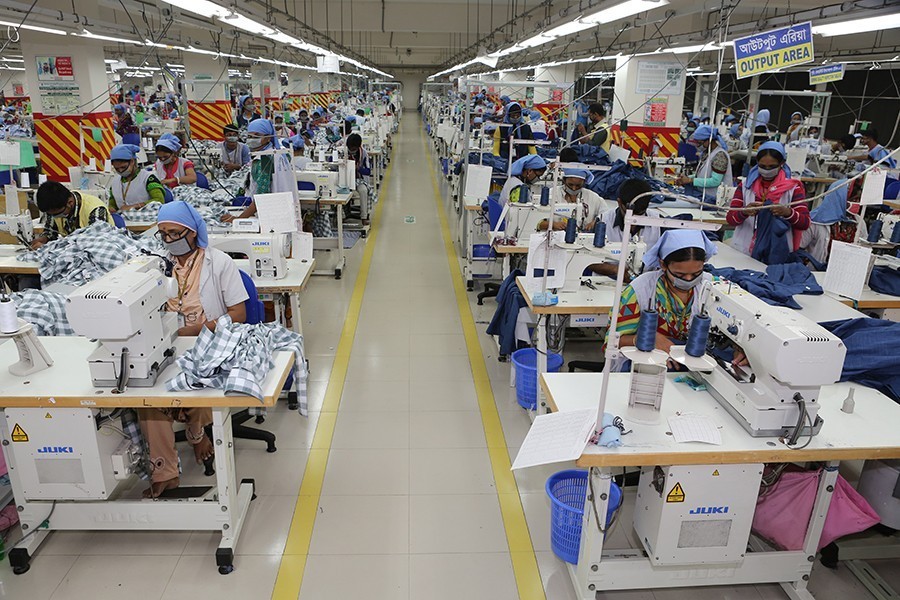Bangladesh's apparel industry could not grab its share up to the potential in a multibillion-dollar global technical textiles trade for a lack of awareness of market requirements and adequate technical expertise.
A German agency in a study revealed such missed opportunity of Bangladesh for tapping prospects of technical textiles (TT), including personal protective equipment (PPE), while these medical apparel products topped global supply chain during the coronavirus pandemic.
The difficulty in sourcing high-performance raw materials, compliance and certification requirements, and the need for capital investment also came as a barrier.
The feasibility study, commissioned by German development agency GIZ, revealed these bottlenecks alongside the challenges and constraints facing the textile and apparel sector in making TT and PPE.
According to data of the Export Promotion Bureau, Bangladesh exported PPE worth $618.25 million in fiscal year (FY) 2020-21, compared to $501 million earned during the previous FY from the export of the same.
President of the Bangladesh Garment Manufacturers and Exporters Association (BGMEA) Faruque Hassan pointed out the lack of prior experience of their industry.
Bangladeshi manufacturers had not produced technical textiles and PPE before the Covid-19 pandemic broke out, he told the FE, and said they were moving for a reorientation.
"We think technical textile has a big market, so we now have started to produce it," he said.
Mr Hassan said the GIZ's study on this, now at final stage, will produce an actual scenario on Bangladesh's position in producing technical textiles and PPE and the lacking.
"We will provide required support to our members based on the study outcomes," he said and added that the study details would be shared with media soon.
According to him China was the main supplier of the items before the pandemic hit the globe. Besides, Vietnam and Thailand are also producing those.
Technical textile is part of non-cotton items or manmade fibre where Bangladesh's apparel industry lags far behind.
"As we are trying to enhance market share of manmade fibre, we are hopeful to be able to grab the TT and PPE markets," he added.
An overview of the study mentions that Bangladesh manufacturers considering entering the TT/PPE market will have to reorganise their operations.
"Since the companies probably have unused capacity, this does not necessarily mean that large investments will be necessary," it said.
The strength of this new sub-sector will, however, depend on the ability of the current textile and apparel industry to tweak its existing facilities to produce new PPE products made from technical textiles suitable for export orders in the most cost-efficient manner.
"The first critical step, therefore, in the new strategy is a reprioritisation of objectives and a redefinition of current operational paradigms," the study overview says, adding that such a shift will still require substantial efforts and effective collaboration among all key sectoral players.
It noted that Bangladesh could initially capitalise on its 'reputation' as a reliable supplier of apparel to expand into the European Union and the Unites States markets for TT/PPE products.
"In summary, the future of the TT/PPE sector lies in synergies and collaboration across the entire value chain," it says to show the way forward.
The study mentions a projection that global technical textile market would grow from US $179.2 billion in 2020 to $224.4 billion by 2025, at an average annual growth rate of 4.2 per cent, while the global PPE market could exceed $93 billion by the end of 2025.
It says Europe is the current leader in the import of medical textiles, but demand from North America is growing and expected to continue to grow.
Bangladesh being a beneficiary of EU's everything-but-arms scheme can take the advantage to grab the market with such new products, it added.


